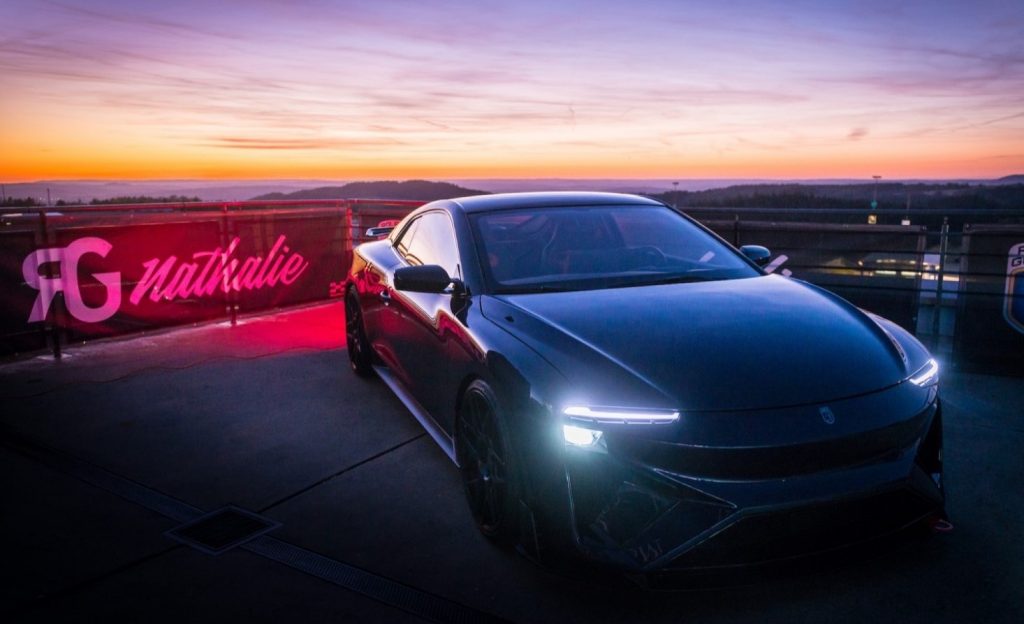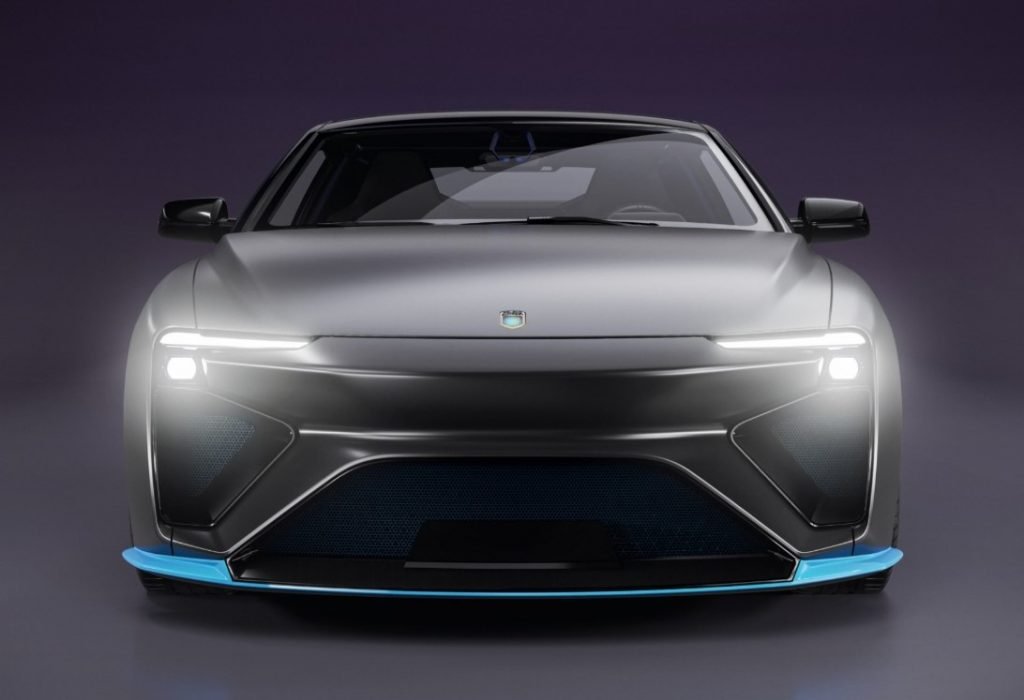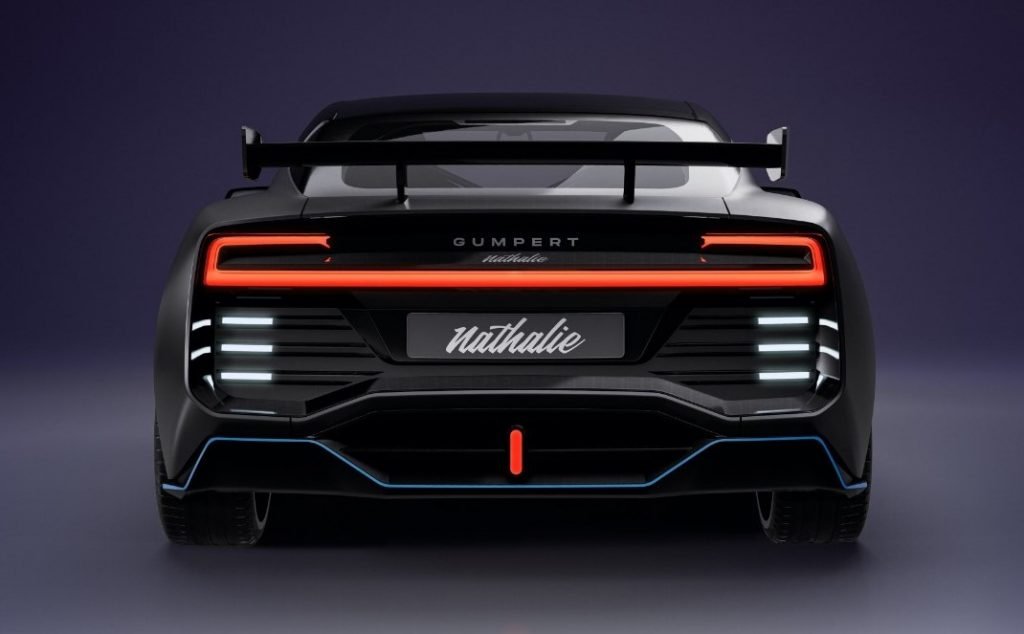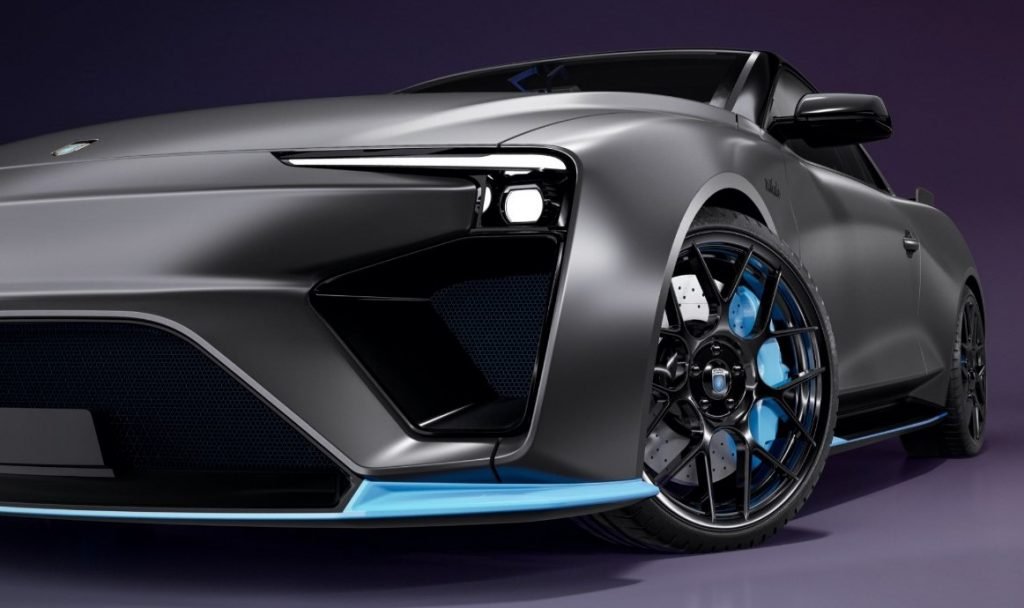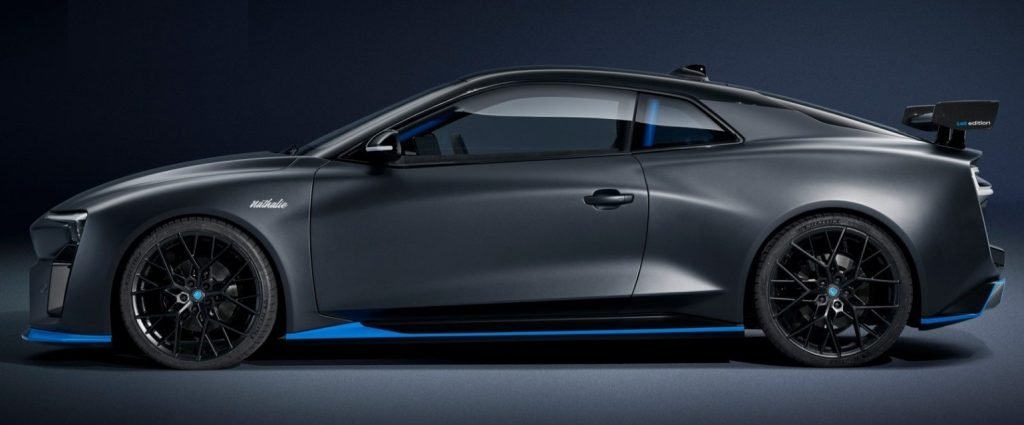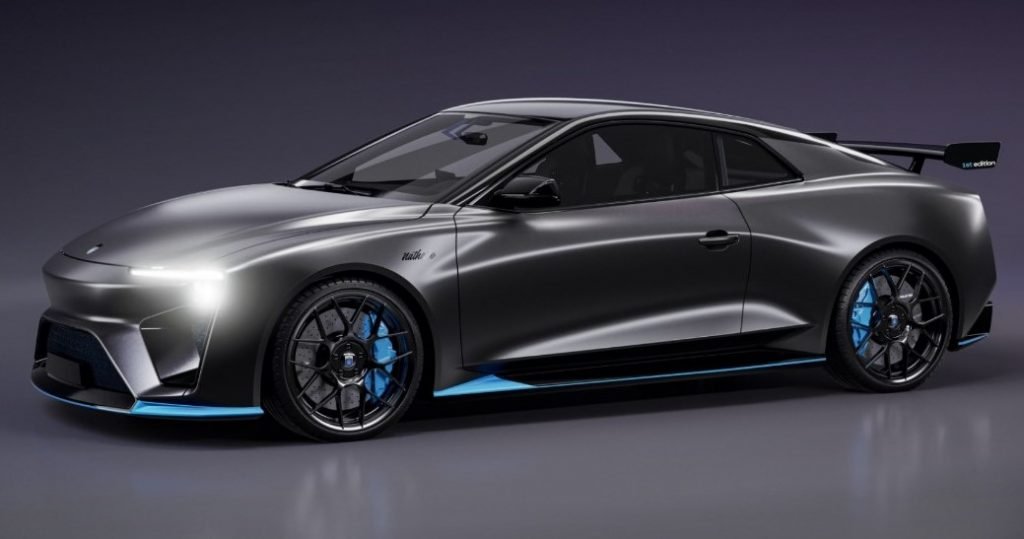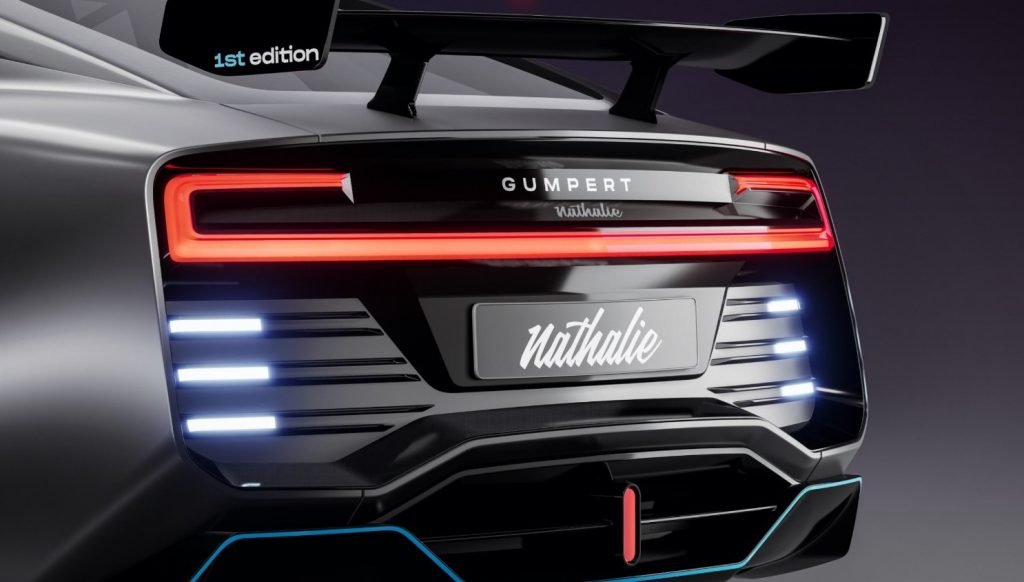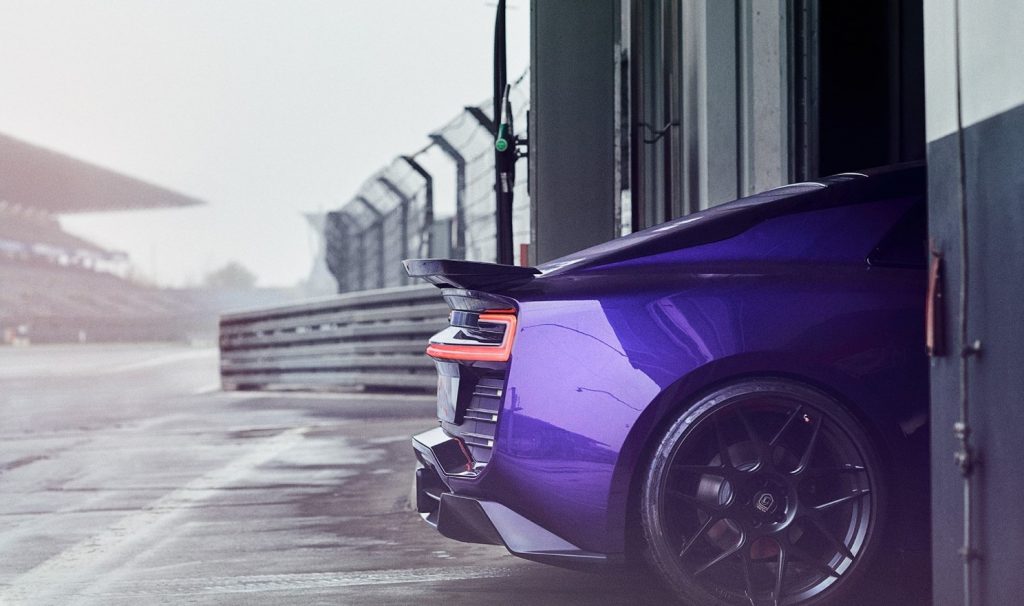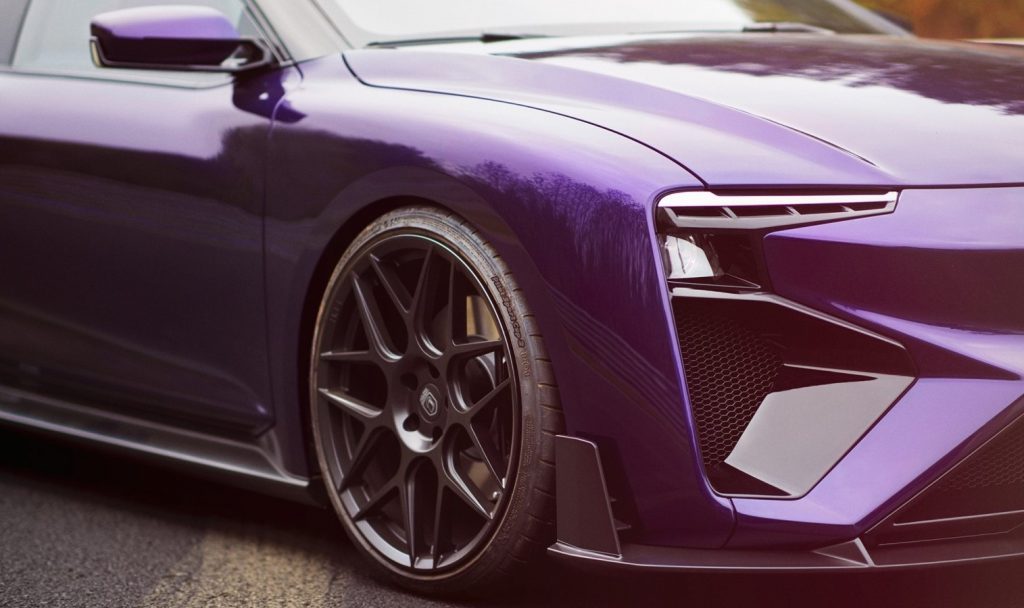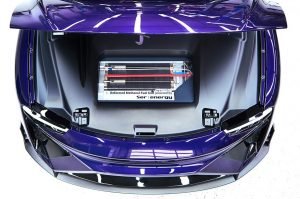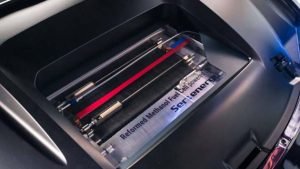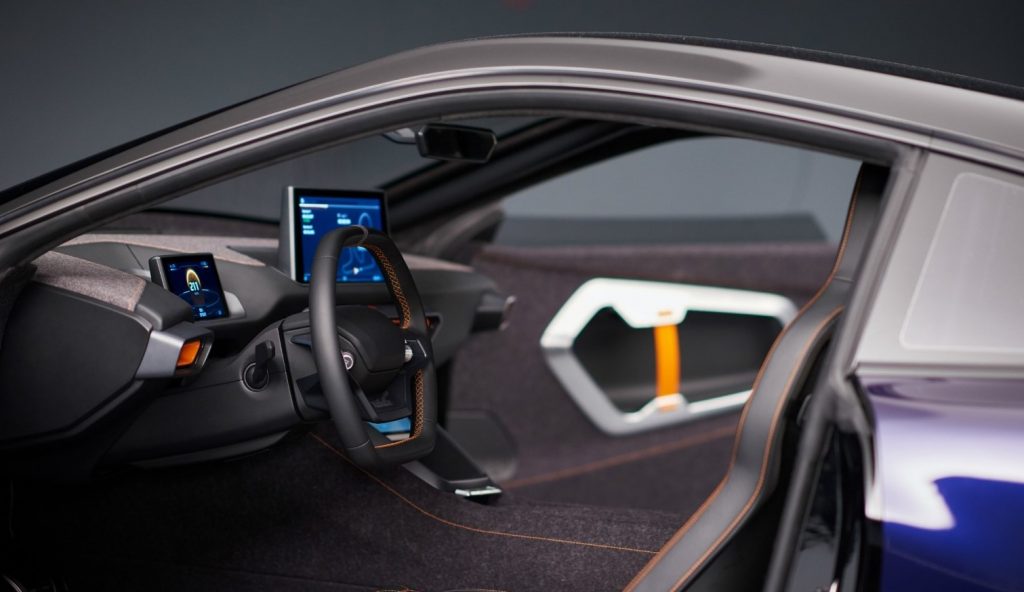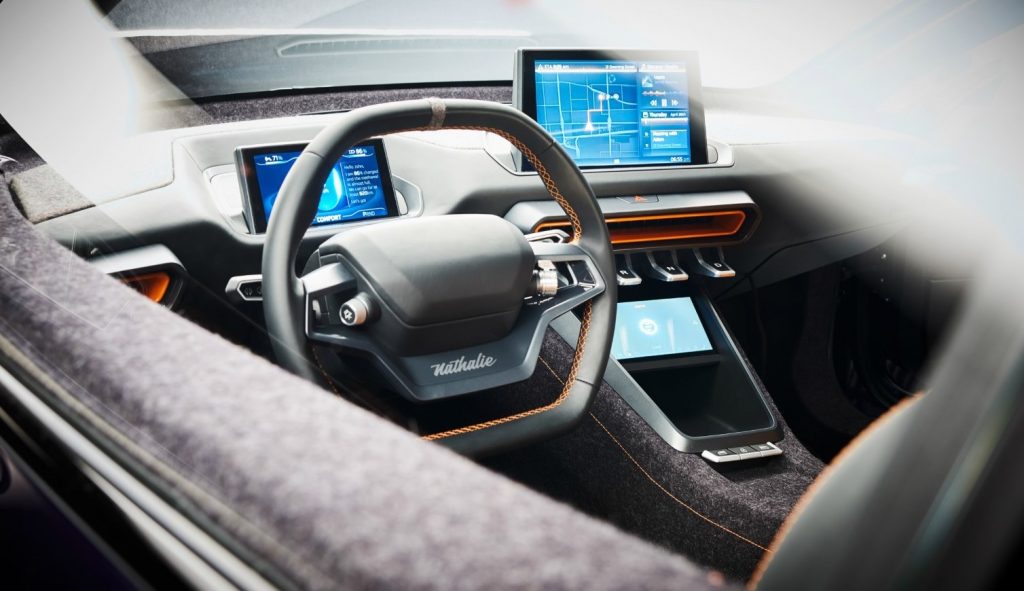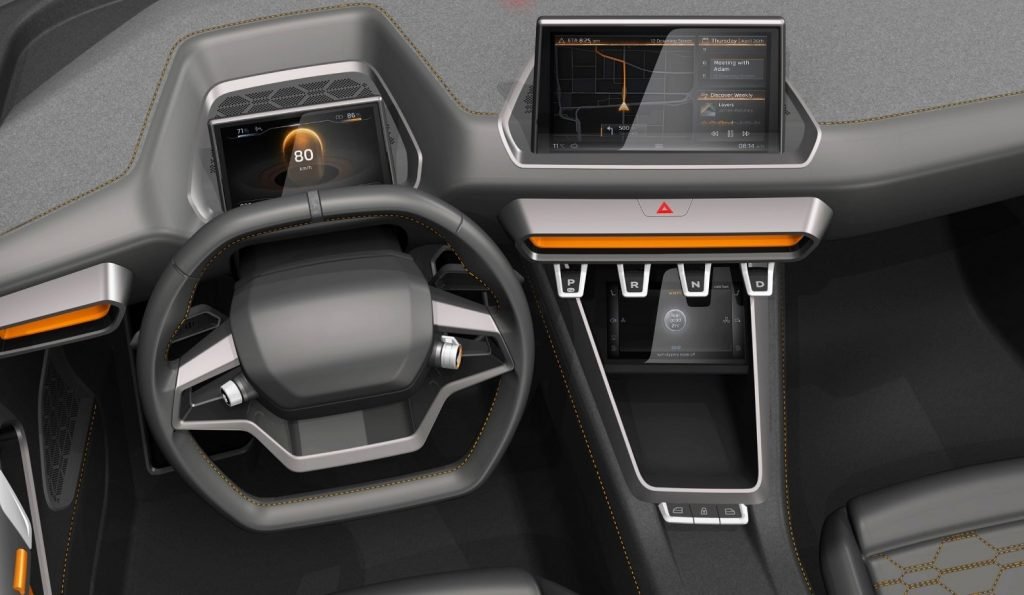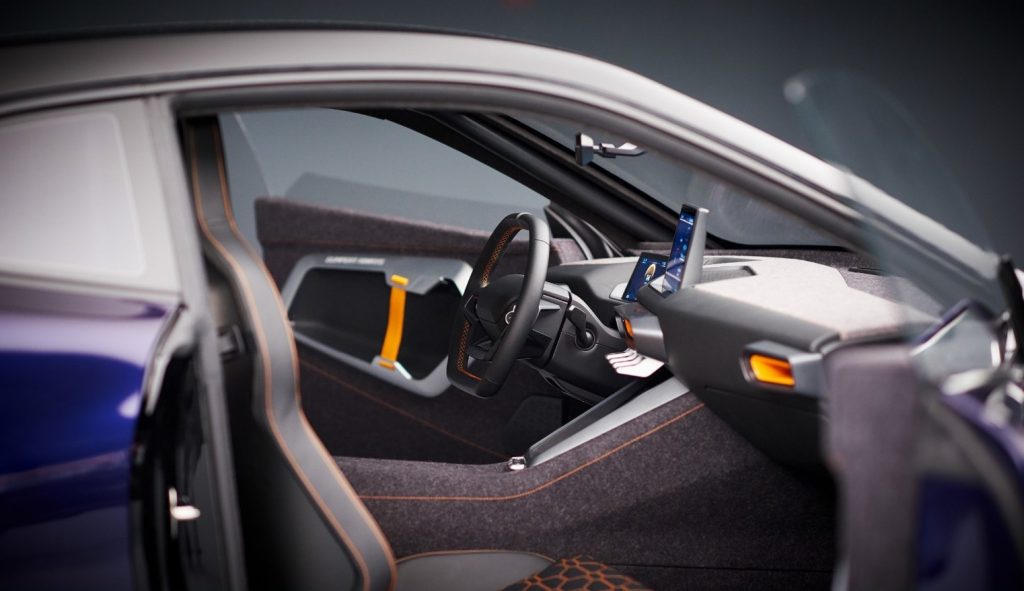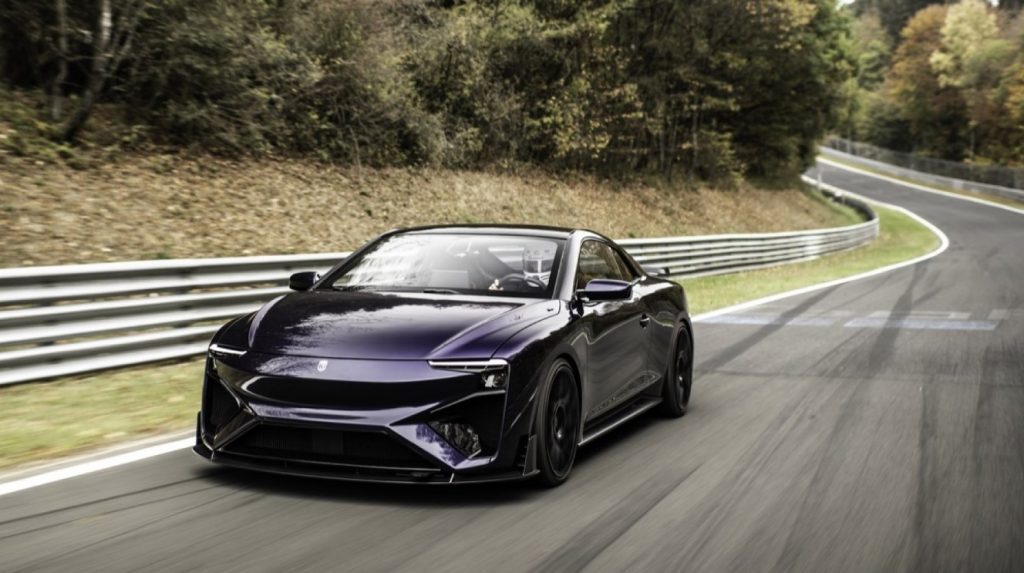After his sports car company went bankrupt in 2014, Roland Gumpert, former president of Audi Sport, engineer of the Audi Quattro, and creator of the Gumpert Apollo, decided that he could make an electric vehicle that can be recharged in a short time. In 2017, Gumpert joined forces with Aiways, a Chinese company based in Shanghai and specialist in alternative energies, and founded “RG” with headquarters in Shanghai and Ingolstadt, Germany.
At the 2018 Beijing Motor Show, the company presented the prototype of its first model, the “Nathalie”, named after Gumpert’s daughter. They announced that 500 units of the Nathalie will be produced starting in late 2019 at a price of US$460,000. At the 2019 Geneva Motor Show, Gumpert presents the Nathalie in its 1st Edition series version with an innovative fuel cell powering four electric motors.
Electric Super Sports Car
Gumpert Aiways promotes the Nathalie as a “road-legal, electric super sports car with racing performance that’s at home on the streets and roads and always prepared for the race track”. A two-seat coupé with similar styling cues to the Nissan GT-R, the Nathalie is equipped with a lightweight carbon shell, grille frame, vortex generator, rear diffuser, and a rear spoiler. Front LED headlights complement the removable shutters and light strip at the back.
A 150-kilowatt electric motor is placed in each wheel and combined, the four motors develop around 540 horsepower. With the benefits of traction on all four wheels and lightweight construction, the Nathalie can accelerate from 0 to 100 km/h in just 2.5 seconds and reach a maximum speed of 300 km/h. Its 4E4W all-wheel drive is equipped with a regenerative system to recharge the batteries during deceleration and braking.
Innovative Methanol Fuel Cell
The Nathalie is equipped with a 15 kW fuel cell that operates on methanol and supplies a 70 kWh battery. The complex system consists of a methanol reformer which, by electrolytic reaction, divides methanol into carbon dioxide and hydrogen, the latter feeding the fuel cell that produces electricity. The regenerative system and the 60-liter methanol tank gives the Nathalie a range of 600 kilometers at a constant 120km/h, or up to 1,200 km in “ECO” mode.
Under the Nathalie’s carbon hood, its fuel cell provides the base energy while the car is being driven. While stopped or driving at low speeds in the city, the fuel cell charges the battery to ensure that there is always enough energy for high-speed driving. The Nathalie can be configured with varying battery combinations and sizes to tailor to the driver’s needs and style.
Clean and Neutral Energy
The Nathalie uses green methanol, which is synthesized, that binds the carbon dioxide (CO2) in the air and releases it later while providing energy, making green methanol a clean and neutral energy carrier. The products of the chemical reaction are water (H2O), CO2, and a negligible percentage of nitrogen oxide (NOx). Refueling is similar to gas- or diesel-powered car, and the methanol tank takes only between three to five minutes to fill up.
Gumpert Aiways heralds the Nathalie as “one of the fastest and most dynamic sports cars you can drive” and as “the embodiment of unencumbered ecological freedom with unlimited, carefree movement and conscientious speed”. Its innovative 2Way energy concept (fuel cell + battery) is promoted as “more versatile and variable than almost anything before it”.
As a fuel cell electric vehicle (FCEV), the Nathalie is marketed as one that’s ready for fun on the circuit, provide a rally feeling on the mountain track, silently cruise through the inner city, or just show off on Highway No. 1. At its price, it should live up to its image as the street-legal electric super sports car with track performance, and more.
 Power Wheels Magazine A Notch Above
Power Wheels Magazine A Notch Above

